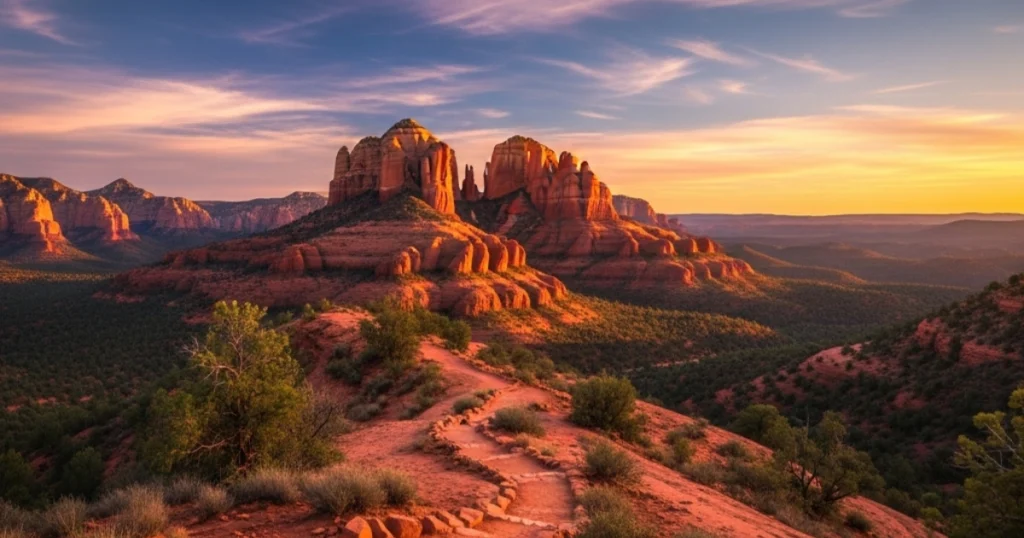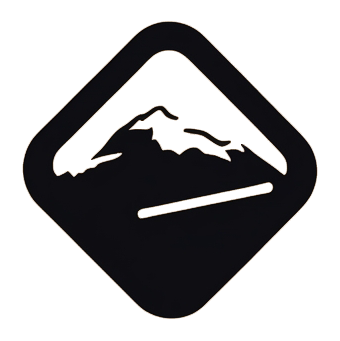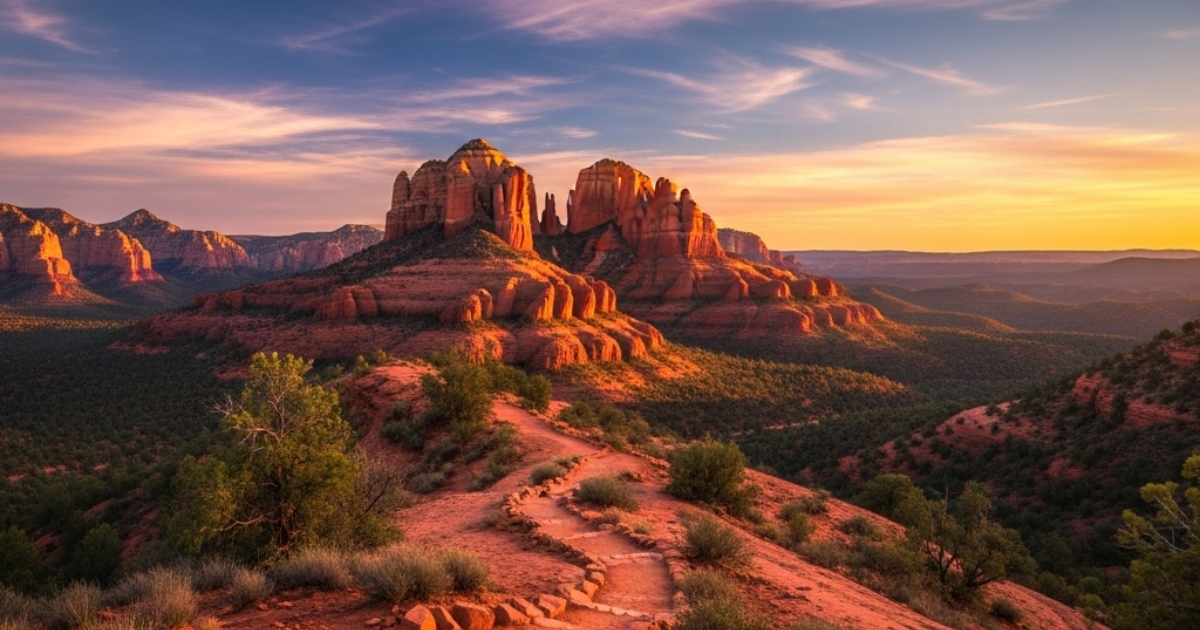
Have you ever stood amidst towering crimson spires, feeling an ancient energy hum beneath your feet? Have you yearned for a connection with nature so profound it shifts your perspective? Sedona, Arizona, with its magnetic red rock formations, offers not just trails, but transformative experiences. As an avid hiker, I’ve chased sunrises over majestic buttes and discovered serene oases tucked away in canyon crevices. There’s a particular magic to conquering these trails, a sense of accomplishment intertwined with the awe of raw, untamed beauty. If you’re seeking to challenge yourself and immerse yourself in one of the world’s most stunning natural landscapes, then prepare to discover the places to hike in Sedona that will forever imprint themselves on your soul.
Why Sedona is a Hiker’s Paradise: Understanding the Allure
Sedona isn’t just a picturesque town; it’s a geological marvel. Your journey into its hiking wonders begins with understanding what makes this destination so unique.
The Mystical Energy Vortexes of Sedona
Sedona is renowned globally for its alleged energy vortexes – specific sites believed to emit enhanced energy that can inspire, heal, and rejuvenate. These areas, where natural energy is said to be concentrated, are often associated with powerful electromagnetic forces. How do they impact hiking? Many hikers report feeling a profound sense of peace, clarity, or invigoration at these sites, adding another layer to the hiking experience. You might encounter these energy points at key vortex sites like Airport Mesa, Boynton Canyon, Cathedral Rock, and Bell Rock.
The Unique Geology of Sedona’s Red Rocks
The striking red color of Sedona’s landscape is a result of iron oxidation within the sandstone. This geological wonder creates a truly unique backdrop for your adventures. Understanding the formation process will deepen your appreciation: these iconic formations were shaped over millions of years by incredible geological forces. Witnessing erosion’s artistry, you’ll see how wind and water sculpted the various buttes, mesas, and canyons you’ll explore. Despite the seemingly arid landscape, you’ll also discover that Sedona hosts a surprisingly diverse array of flora and fauna, adding vibrant life to the crimson scenery.
Iconic Places to Hike in Sedona: Trails for Every Explorer
Whether you’re a seasoned trekker or a casual stroller, there are places to hike in Sedona that cater to your skill level and desire for adventure.
Beginner-Friendly Trails: Gentle Beauty and Accessible Vistas
Perfect for families or those seeking a leisurely introduction to Sedona’s beauty, these trails offer stunning views without demanding too much effort.
| Trail Name | Length (Roundtrip) | Elevation Gain | Key Features |
|---|---|---|---|
| Fay Canyon Trail | 2.3 miles | 300 feet | Shady canyon, natural arch, stunning views |
| West Fork Trail | 6.5 miles | 800 feet | Creek crossings, lush vegetation, shaded path |
| Airport Mesa Trail | 3.2 miles | 200 feet | Panoramic sunset views, vortex site, easy loop |
Export to Sheets
The Fay Canyon Trail offers a relatively flat walk leading to a magnificent natural arch. This is an excellent option for escaping the direct sun and enjoying tranquil beauty. The West Fork Trail of Oak Creek Canyon is often considered one of Arizona’s most beautiful trails, offering numerous creek crossings and a lush, shaded environment, making it ideal for a summer hike. Lastly, the Airport Mesa Trail is a popular spot for sunrise and sunset, providing 360-degree views of Sedona’s majestic landscape and a powerful energy vortex.
Moderate Trails: A Step Up in Challenge and Reward
These trails offer more elevation gain and length, rewarding you with even more spectacular views and a greater sense of accomplishment. The Boynton Canyon Trail allows you to explore a significant vortex site and enjoy diverse scenery, from forested paths to open red rock expanses. The Bell Rock Pathway is a popular, relatively flat path offering stunning views of Bell Rock and Courthouse Butte, and for those feeling a bit more adventurous, you can also scramble up the side of Bell Rock for a more challenging experience. One of Sedona’s most famous hikes is the Devil’s Bridge Trail, leading to a stunning natural sandstone arch. Be prepared for crowds, especially during peak season. An insider tip: go early in the morning or later in the afternoon to avoid the busiest times. The final climb to the bridge is steep but undeniably rewarding.
Challenging Hikes: Conquer the Red Rocks
For the adventurous and experienced hikers looking to truly “conquer the red rocks,” these trails offer significant elevation gain, rugged terrain, and unparalleled vistas that will test your limits and reward your effort. The Cathedral Rock Trail is a steep, challenging climb up one of Sedona’s most iconic formations. The views from the saddle are absolutely breathtaking, especially at sunset. What to expect? Hand-over-foot climbing in sections, but it’s absolutely worth the effort for the panoramic reward. The Bear Mountain Trail is a strenuous and lengthy ascent, offering incredible views of the Verde Valley and surrounding red rock country. This is a true test of endurance. Finally, the Doe Mountain Trail is a shorter but steep climb to a flat mesa top, offering sweeping views of the surrounding landscape, including Boynton Canyon and Fay Canyon.
Planning Your Sedona Hiking Adventure: Essential Tips and Gear
To ensure a safe and enjoyable experience exploring the many places to hike in Sedona, preparation is key.
Best Time to Visit and Hike in Sedona
The timing of your visit can significantly impact your hiking experience. Spring (March-May) offers ideal temperatures and wildflowers in bloom, though it can be crowded. Fall (September-November) also provides pleasant temperatures and beautiful fall foliage in the canyons, making it another popular time. Winter (December-February) brings cooler temperatures and fewer crowds, with the possibility of snow on higher elevations, which adds to the beauty! Summer (June-August) is characterized by hot temperatures, making early morning or late afternoon hikes advisable, and you should seek out shaded trails.
What to Pack: Your Essential Hiking Checklist
Proper gear is crucial for safety and comfort in Sedona’s unique environment. Water, water, water is crucial in the arid desert environment – always carry more than you think you’ll need. Sun protection, including a hat, sunglasses, and sunscreen, is essential, even on cloudy days. You’ll need appropriate footwear; sturdy hiking boots or shoes with good grip are essential for the uneven terrain. Layered clothing is recommended as temperatures can fluctuate throughout the day. Don’t forget snacks like energy bars, fruits, or nuts to keep you fueled. For navigation, bring a map (physical and/or digital), compass, or GPS device, as cell service can be spotty. A small first-aid kit is always wise for minor scrapes and blisters. A headlamp or flashlight is useful if you plan to hike near dawn or dusk, and of course, a camera to capture the stunning scenery!
Leave No Trace Principles: Protecting Sedona’s Beauty
Help preserve the natural beauty of the places to hike in Sedona for future generations by adhering to these principles. Always plan ahead and prepare, knowing your route and potential hazards. Travel and camp on durable surfaces by staying on marked trails to minimize your impact. Dispose of waste properly – pack it in, pack it out, leaving no trace behind. Leave what you find; do not disturb natural or cultural artifacts. Minimize campfire impacts by using established fire rings or avoiding fires altogether, especially during dry periods. Respect wildlife by observing from a distance and never feeding animals. Finally, be considerate of other visitors by sharing the trails and being mindful of noise levels.
Beyond the Trails: Enhancing Your Sedona Experience
Sedona offers more than just hiking. Integrate these activities to enrich your visit and create a well-rounded experience. Take advantage of stargazing opportunities, as Sedona is a designated Dark Sky Community, offering unparalleled views of the night sky. Explore the town’s numerous spas, meditation centers, and yoga studios for spiritual retreats and wellness. Discover Sedona’s vibrant art scene and diverse dining options by visiting art galleries and sampling local cuisine. For a different kind of adventure, consider jeep tours, a fun way to explore the rugged backcountry if you’re short on time or prefer a less strenuous adventure.
Conclusion: Your Unforgettable Journey Awaits
The places to hike in Sedona are more than just trails; they are gateways to profound natural beauty, personal challenge, and spiritual rejuvenation. From the gentle meanders of Fay Canyon to the strenuous ascent of Cathedral Rock, each path offers a unique opportunity to connect with the raw, untamed spirit of the red rocks. So, pack your bags, lace up your boots, and prepare to embark on an unforgettable journey. Conquer the red rocks, and you’ll discover not only the majesty of Sedona but also a deeper connection within yourself. Your epic adventure awaits!
FAQ: Places to Hike in Sedona
Q1: What are the best places to hike in Sedona for beginners?
A1: For beginners, consider the Fay Canyon Trail, West Fork Trail of Oak Creek Canyon, or the Airport Mesa Trail. These offer relatively flat paths and stunning views without extreme difficulty.
Q2: Are there any challenging places to hike in Sedona?
A2: Absolutely! For experienced hikers seeking a challenge, Cathedral Rock Trail, Bear Mountain Trail, and Doe Mountain Trail offer steep climbs and significant elevation gains with incredible rewards.
Q3: What should I pack for hiking in Sedona?
A3: Always bring plenty of water, sun protection (hat, sunscreen, sunglasses), sturdy hiking boots, layered clothing, and snacks. A map or GPS device is also highly recommended due to variable cell service.
Q4: When is the best time of year to hike in Sedona?
A4: Spring (March-May) and Fall (September-November) offer the most pleasant temperatures for hiking. Winter provides fewer crowds and cooler weather, while summer requires early morning or late afternoon hikes due to heat.
Q5: What are Sedona’s famous energy vortexes, and are they near hiking trails?
A5: Sedona’s energy vortexes are concentrated areas of natural energy. Many popular hiking trails are located near or encompass these vortexes, including Airport Mesa, Boynton Canyon, Cathedral Rock, and Bell Rock, offering a unique spiritual dimension to your hike.

